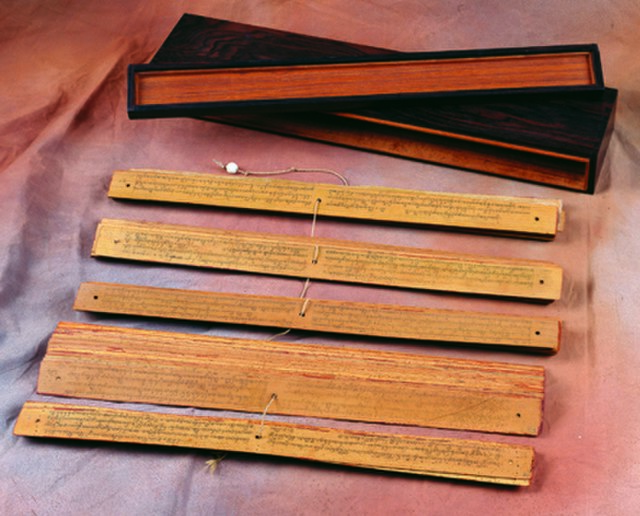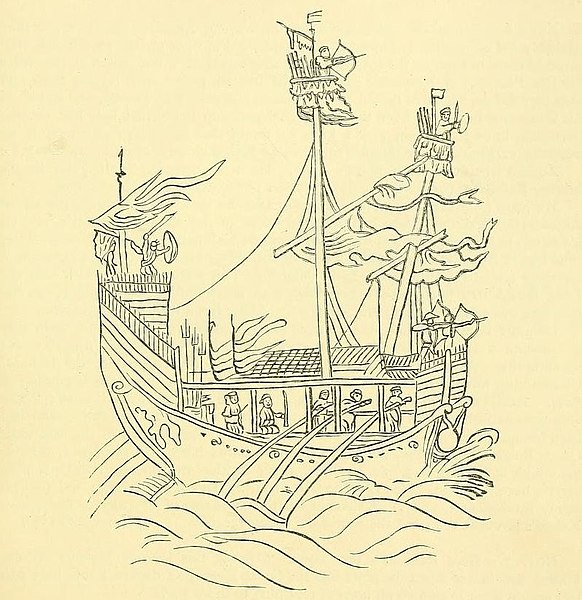Kidung Sunda is a Middle-Javanese kidung of probable Balinese provenance. In this poem, the story of King Hayam Wuruk of Majapahit who was looking for a bride-to-be, is narrated. At last, he chose the princess of Sunda, a kingdom in West Java. The princess' name has remained undisclosed in this story, however, she corresponds to Dyah Pitaloka Citraresmi in Pararaton. Hayam Wuruk's grand vizier Gajah Mada, betrayed his king and rejected this idea. There was a dispute about geopolitical relations between Sunda and Majapahit. Gajah Mada considered Sunda to be a vassal state of Java. For that reason, a great battle took place in Bubat, the port where the Sundanese party landed as they refused to be treated as vassals. There the Majapahit-Javanese army slaughtered the Sundanese. The grieved princess of Sunda committed suicide not long afterward. This historical story has to be situated somewhere in the 14th century.
A Chinese-Javanese hybrid junk, drawn by van Linschoten in 1596.
Image: Javanese Handcannon from Majalengka
Palm leaf manuscript of the poem, click for the full archival pdf of the poem.
Majapahit, also known as Wilwatikta, was a Javanese Hindu-Buddhist thalassocratic empire in Southeast Asia that was based on the island of Java. It existed from 1293 to circa 1527 and reached its peak during the era of Hayam Wuruk, whose reign from 1350 to 1389 was marked by conquests that extended throughout Southeast Asia. His achievement is also credited to his prime minister, Gajah Mada. According to the Nagarakretagama written in 1365, Majapahit was an empire of 98 tributaries, stretching from Sumatra to New Guinea; consisting of present-day Indonesia, Singapore, Malaysia, Brunei, southern Thailand, Timor Leste, southwestern Philippines although the scope of Majapahit sphere of influence is still the subject of debate among historians. The nature of Majapahit's relations and influence upon its overseas vassals and also its status as an empire still provokes discussion.
A maja fruit growing near Trowulan. The bitter-tasting fruit is the origin of the kingdom's name.
Nagarakretagama palm-leaf manuscript. Composed by Mpu Prapanca in 1365, it provides a primary historical account of Majapahit court during the reign of King Hayam Wuruk.
Wayang klithik puppet of Raden Damar Wulan―the hero of Majapahit kingdom
Painting of a 14th-century Yuan junk. Similar ships were sent by the Yuan in their naval armada.







